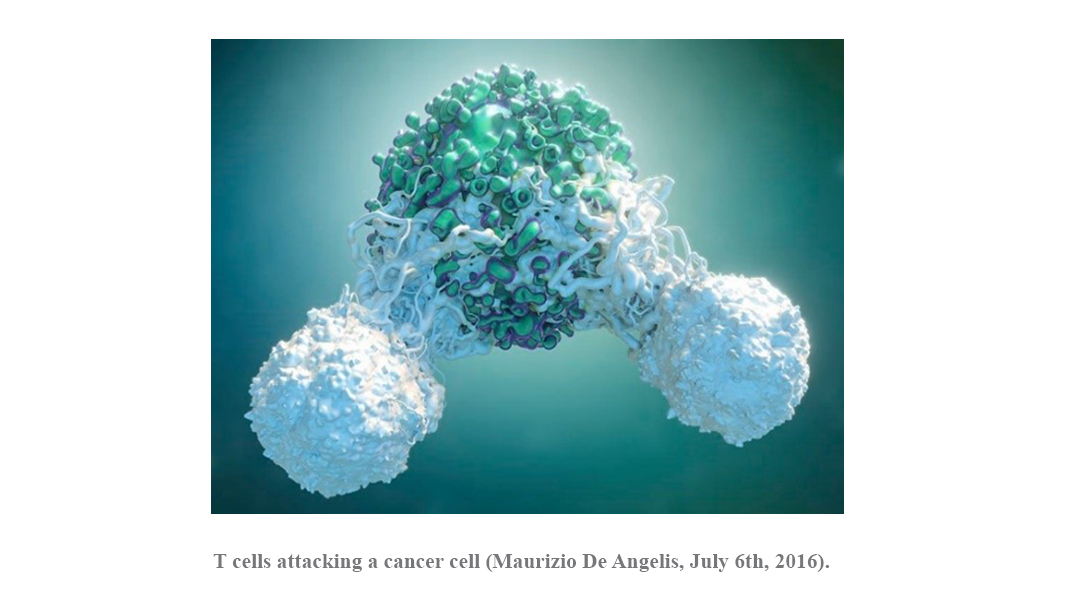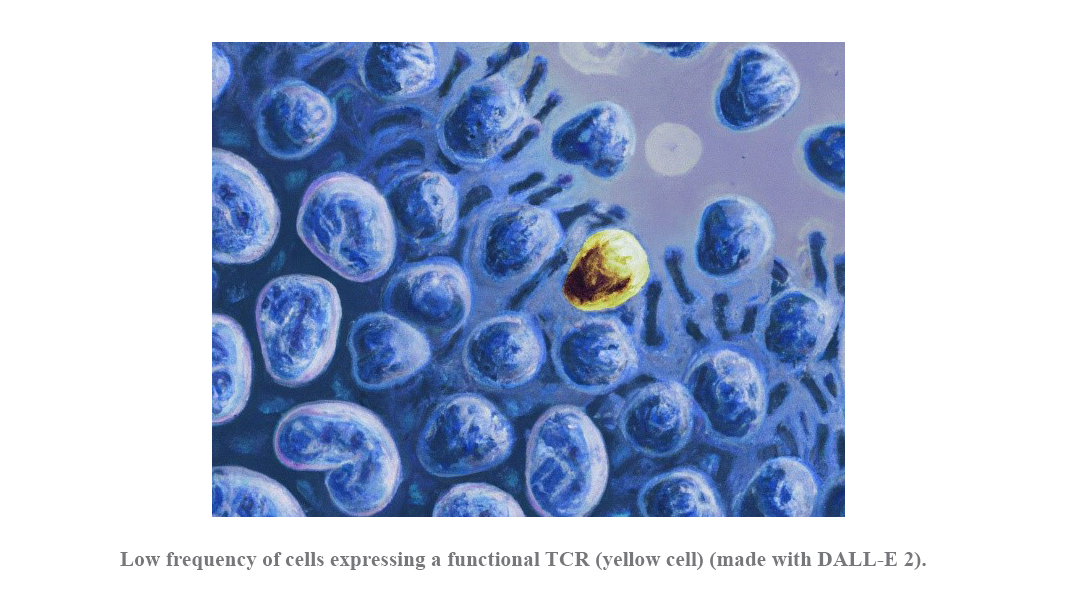How to find a therapeutic TCR
The clinical success of cellular therapy with TCR-engineered T cells relies on the infused living drug's ability to activate and sustain a potent immune response against the target cells. T cell activation begins with the recognition of peptides presented by Major Histocompatibility Complex molecules (pMHC) on the target cells through the TCR. The subsequent triggering of the TCR signaling cascade culminates in the production of effector molecules, which are responsible for specific cell killing. However, only a small fraction of the TCR repertoire that recognizes a certain antigen can fully engage a T cell throughout all these steps. This primarily depends on the strength of the TCR:pMHC interaction, known as ‘TCR avidity’. Our goal is to develop functional screenings and in vitro assays for the high-throughput evaluation of TCR avidity and overall potency of TCR-engineered T cells. Through this advancements, we aim to facilitate a rapid selection of clinically relevant TCRs.
The identification of clinically relevant TCRs remains a laborious process, involving the isolation of antigen-specific T cells from suitable donors, subsequent sequencing of the corresponding TCRs, and re-expression for further characterization. This approach is not only time-consuming and costly but also relatively inefficient, as only a minor fraction of the identified TCRs meet the requirements of potency for clinical translation. To address these challenges, our group is developing functional screenings for predicting TCR functionality prior re-expression. This will enable us to prioritize in-depth analyses for those TCR candidates with a high probability of being highly functional.
We believe that healthy donors serve as an ideal source for identifying tumor-specific TCRs. Firstly, the peripheral blood of these individuals is readily accessible. Secondly, the huge diversity of the antigen-unexperienced TCR repertoire harbors T cells with the potential to target virtually any foreign antigen, including tumor antigens. However, naïve antigen-specific T cell populations are of extremely low frequency and contain a substantial fraction of T cells expressing low functional TCRs. To overcome these limitations, we are exploring innovative techniques that combine pMHC multimer-guided cell sorting of rare antigen-specific naïve T cells with a functional screening method capable of estimating the avidity of each individual pMHC multimer-reactive TCR. This approach allows for the isolation and simultaneous ranking of epitope-specific TCRs based on predicted avidity and functionality.
Virus-specific TCRs are, instead, more proficiently isolated from healthy seropositive donors Taking advantage of the higher frequencies of memory repertoires in this setting, we have developed a high-throughput, single-cell sequencing-based approach that discriminates highly functional from bystander TCRs by analyzing transcriptional shifts in T-cell activation genes induced by recent peptide stimulation prior cell sorting (Wagner et al., Cell Reports 2022; Mateyka et al., Vaccines 2022). Currently, we are refining and enhancing the predictive power of these gene signatures for broader applicability.
Personnel


To make TCR therapy widely applicable, it is crucial to have a diverse array of TCRs that can recognize various viral or tumor epitopes in the context of different Human Leucocyte Antigens (HLAs). This is especially important in cancer treatment, where targeting multiple epitopes simultaneously can be advantageous in addressing tumor heterogeneity.
The advent of peptide major histocompatibility complex (pMHC) multimer technology has been revolutionary in T cell analysis, providing an unprecedented level of antigen specificity. Advancements in pMHC technology have further expanded the capacity for epitope discovery. Recently, barcoding of pMHC multimers with DNA oligonucleotides has enabled the simultaneous isolation of T cells with up to 1000 different epitope specificities. This multiplexed approach could significantly increase the pool of candidate TCR candidates for adoptive cell therapy that can be obtained from a single donor. A crucial step in this advancement was the development of UV-cleavable MHC ligands. With exchangeable UV-sensitive peptides, a single MHC sample can be loaded with one of thousands of different peptides to create a large pMHC multimer library in relatively short time.
In our T-cell isolation platform, we aim to leverage the power of cutting-edge pMHC technology, with a primary focus on identifying tumor-specific TCRs from the naïve T cell repertoire of healthy donors.
Personnel


Following the identification of antigen-specific TCRs, verifying their specificity and functionality is essential, even if a functional screening was involved during the isolation process. This step includes re-expressing the TCR and characterizing its functionality.
For the initial screening of TCR specificity and sensitivity, we established a high-throughput system based on the widely used Jurkat E6.1 cell line, modified into a triple parameter reporter (J-TPR) system. This modification enables us to measure TCR activation through the expression of fluorescent proteins (CFP, eGFP, and mCherry) driven by response elements for T-cell activation transcription factors NFAT, NF-kB, and AP-1, respectively. Ultimately, TCR potency is assessed based on its ability to efficiently mediate target cell killing in primary TCR-engineered T cells. To consider physiological antigen processing and expression of target epitopes, we have developed near-physiological infection systems using living SARS-CoV-2 virus as a model, as well as a system for the expression of the whole open reading frame containing a target epitope.
Recently, we have expanded our focus on investigating “cellular avidity”, which considers the entire immunological synapse, including co-receptors, costimulatory/coinhibitory molecules and adhesion molecules. Cellular avidity is considered a better predictor of in vivo functionality compared to TCR affinity, which focuses on monomeric pMHC:TCR interactions.
By combining different TCR characterization methods, we aim to expedite the process of identifying the most effective TCRs for clinical application. Our comprehensive approach holds the potential to enhance the success of TCR therapy in combating various diseases.
Personnel






